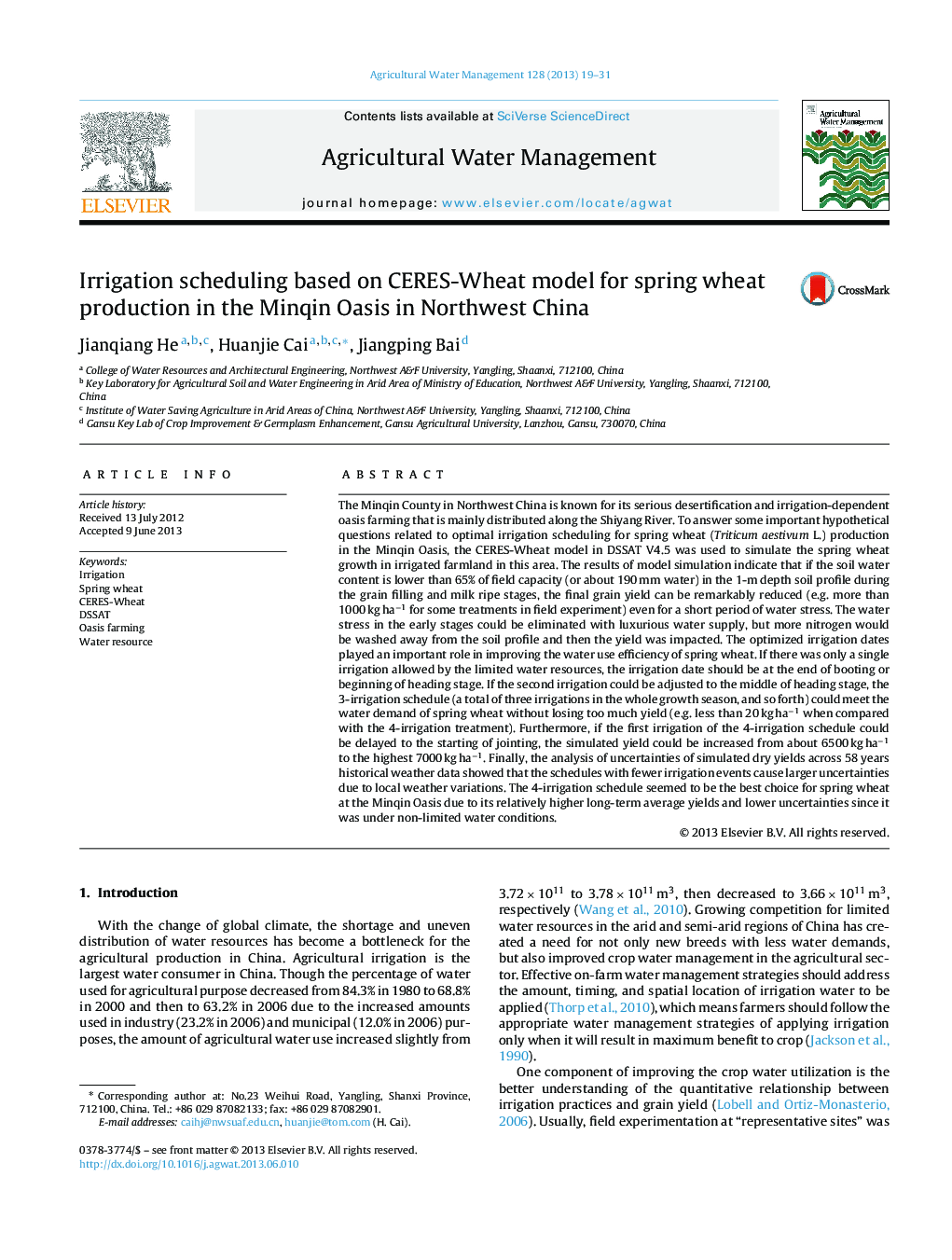| کد مقاله | کد نشریه | سال انتشار | مقاله انگلیسی | نسخه تمام متن |
|---|---|---|---|---|
| 6364078 | 1622951 | 2013 | 13 صفحه PDF | دانلود رایگان |
عنوان انگلیسی مقاله ISI
Irrigation scheduling based on CERES-Wheat model for spring wheat production in the Minqin Oasis in Northwest China
دانلود مقاله + سفارش ترجمه
دانلود مقاله ISI انگلیسی
رایگان برای ایرانیان
کلمات کلیدی
موضوعات مرتبط
علوم زیستی و بیوفناوری
علوم کشاورزی و بیولوژیک
علوم زراعت و اصلاح نباتات
پیش نمایش صفحه اول مقاله

چکیده انگلیسی
The Minqin County in Northwest China is known for its serious desertification and irrigation-dependent oasis farming that is mainly distributed along the Shiyang River. To answer some important hypothetical questions related to optimal irrigation scheduling for spring wheat (Triticum aestivum L.) production in the Minqin Oasis, the CERES-Wheat model in DSSAT V4.5 was used to simulate the spring wheat growth in irrigated farmland in this area. The results of model simulation indicate that if the soil water content is lower than 65% of field capacity (or about 190 mm water) in the 1-m depth soil profile during the grain filling and milk ripe stages, the final grain yield can be remarkably reduced (e.g. more than 1000 kg haâ1 for some treatments in field experiment) even for a short period of water stress. The water stress in the early stages could be eliminated with luxurious water supply, but more nitrogen would be washed away from the soil profile and then the yield was impacted. The optimized irrigation dates played an important role in improving the water use efficiency of spring wheat. If there was only a single irrigation allowed by the limited water resources, the irrigation date should be at the end of booting or beginning of heading stage. If the second irrigation could be adjusted to the middle of heading stage, the 3-irrigation schedule (a total of three irrigations in the whole growth season, and so forth) could meet the water demand of spring wheat without losing too much yield (e.g. less than 20 kg haâ1 when compared with the 4-irrigation treatment). Furthermore, if the first irrigation of the 4-irrigation schedule could be delayed to the starting of jointing, the simulated yield could be increased from about 6500 kg haâ1 to the highest 7000 kg haâ1. Finally, the analysis of uncertainties of simulated dry yields across 58 years historical weather data showed that the schedules with fewer irrigation events cause larger uncertainties due to local weather variations. The 4-irrigation schedule seemed to be the best choice for spring wheat at the Minqin Oasis due to its relatively higher long-term average yields and lower uncertainties since it was under non-limited water conditions.
ناشر
Database: Elsevier - ScienceDirect (ساینس دایرکت)
Journal: Agricultural Water Management - Volume 128, October 2013, Pages 19-31
Journal: Agricultural Water Management - Volume 128, October 2013, Pages 19-31
نویسندگان
Jianqiang He, Huanjie Cai, Jiangping Bai,